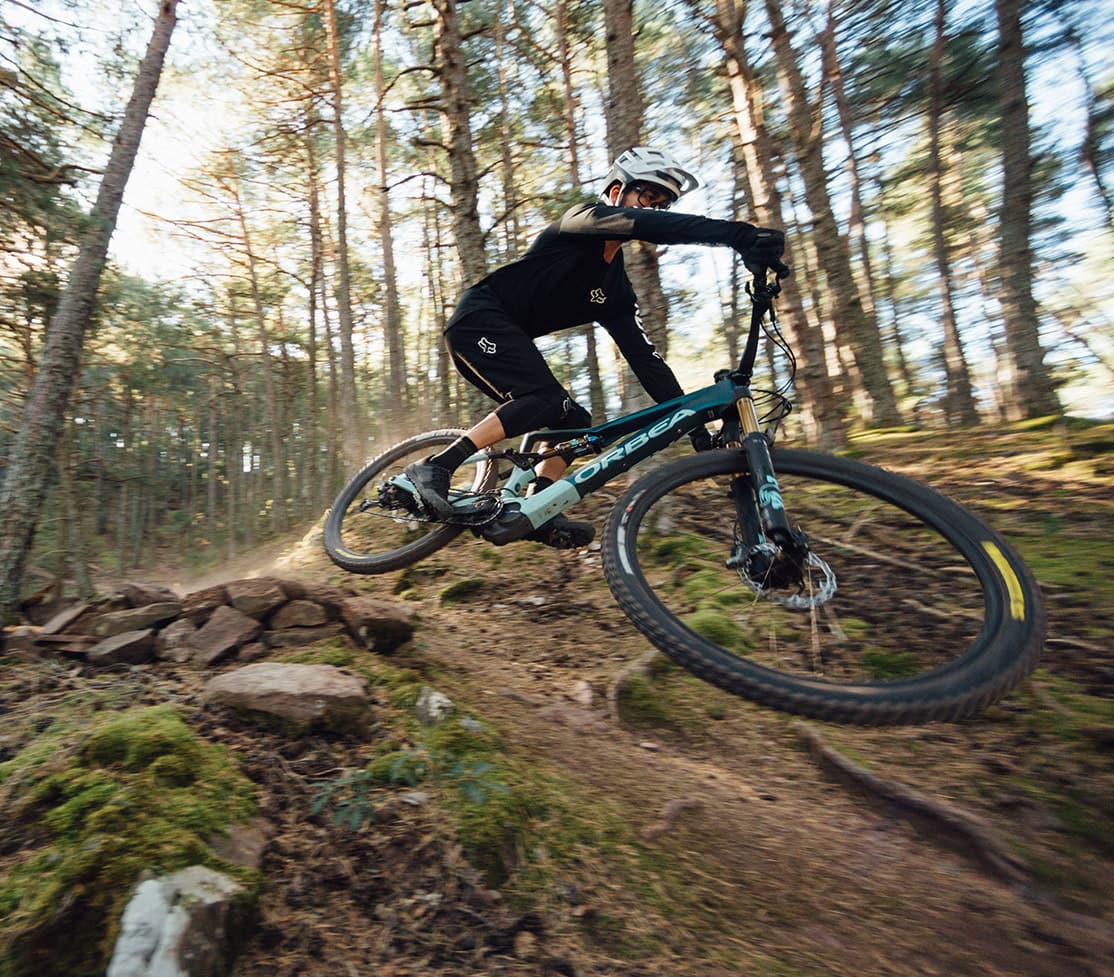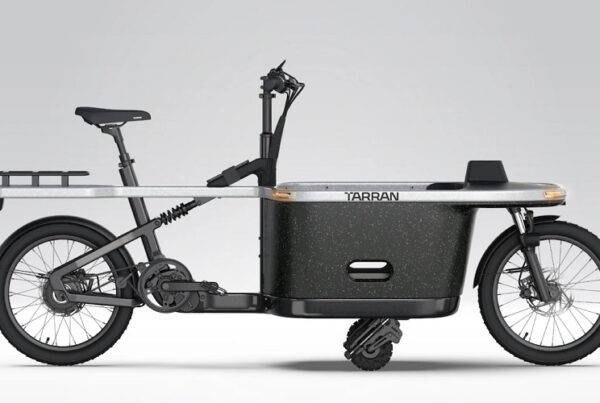Interested in just where e-bikes might be heading as we head towards 2021? We take a look at five e-bike trends set to accelerate over the coming months and years.
Lighter, More Responsive and More Automated Motors
There have been plenty of new motor releases and upgrades in 2020. The power increase and weight reduction war between the big four mid-drive motor manufacturers (Bosch, Brose, Shimano and Yamaha) continued in 2020 with the release of Shimano’s headline-grabbing EP8 as exemplified by the Orbea Rise with the EP8 especially tuned for a ‘more natural and sportier’ ride as the ‘RS’ version.
Just by tweaking the software of the motor, Orbea managed to reduce the maximum torque from 85 Nm to 60 Nm – Orbea realised that, at cadences between 80 and 90 rpm, neither the Performance Line CX nor the EP8 use their full torque at maximum power and the difference in torque becomes evident particularly when setting off, accelerating and negotiating steep technical climbs: here the EP8-RS requires more input from the rider and thus makes for a very natural, sporty ride feeling and reduced battery consumption.’ This in turn means less power consumption, a greater range and so a smaller battery is suitable (Orbea went with 360Wh capacity for the Rise with the option to extend the capacity to 612Wh via a ‘bottle’ battery if required).
Bosch have also been tweaking their software in 2020 to get a more natural feeling ride for off-roaders. I’ve done a lot of serious off-road miles in this semi-automatic e-mtb mode which switches between power levels for you based on your effort and the terrain – and really like the feel of it. 2021 sees the release of an e-mtb mode software upgrade for the Performance Line CX motor which is fitted to many, many top-line e-mtbs. The motor itself boasts a headline-grabbing extra 10Nm of torque but the real innovation comes in how and when the power is applied in an effort for a natural ride that is aimed at getting the rider over more obstacles in difficult positions and toning the power down in some situations such as at high cadences with light pedal pressure.
The cleverest trick attempted by Bosch is e-mtb mode’s Extended Boost feature, automatically activated when a rider puts a pre-defined amount of pressure through the pedals and provides “decisive thrust for negotiating an obstacle” – for example if you meet a rock step or tree root – in other words, it acts as a ‘throttle blip’ via the application of crank pressure. The good news is older Performance Line CX models can be upgraded at a dealer.

This move to more subtle power is mirrored on e-road bikes too in the form of Mahle’s latest Ebikemotion lightweight, low torque, almost invisible rear hub motor. 2021 launches see a slew of e-road bikes such as the Scott Addict eRide (claimed weight 10.75kg), the new Orbea Gain (see above) and the Colnago E64, to name but a few. These bikes all hover a few kg above the 10kg mark but surely a sub 10kg e-road bike is only a matter of time?

The Revonte One is a drive unit and gearbox combined, removing the need for a traditional gearing system in the rear wheel.
More radical designs of the mid-drive are certainly on the horizon though, in particular in the form of Finland’s Revonte ONE system. It is essentially a drive unit and gearbox combined, removing the need for a traditional gearing system in the rear wheel. The gears can be automatically changed with the continuously variable transmission, or CVT. design.
What are the potential advantages? It’s no exaggeration to say it could revolutionize many aspects of the e-bike. The most obvious one is that it removes gearing from the rear wheel which would bring the advantages of a totally maintenance-free e-bike. It also puts more weight low down and centrally so that handling characteristics would improve.
The drive unit quoted stats are a weight of 4.7kg, 250W continuous power rating with a maximum 1,500W and 90Nm torque. There’s a 416% gear range at 60rpm. The battery comes in at 3.98kg and has been developed to work with the system by partner company BMZ. Concept bikes have already been produced by Fell and Lavelle.
The system is also packed with technology like 4G connectivity as shown in the video above, so it can be customised for use by the end user. For the full implications of programmability and smart technology see out feature on the subject here.
Small But Mighty Cargo Carriers

Tern’s GSD comes with all manner of attachments for carrying all manner of things
Of late e-cargo bike manufacturers seem particularly intent on showing just how much you can get on an e-bike.
Short tail e-cargo bikes continue to go from strength to strength. Earlier in the year Tern relaunched their GSD model to make it an even more capable load carrier. The stronger, stiffer, and even more stable frame can carry up to two kids or an adult passenger, plus extra cargo. There is also a more powerful motor, new double kickstand design, front suspension fork and integrated footplates.

Keep the kids dry with Tern’s new Clubhouse Fort housing
The latest addition to the many carrying options is the Clubhouse Fort system we featured in a recent news post. It’s typical of the way short tail e-cargo bikes are being used for more and more tasks in more and more situations.

Rad Power’s RadRunner Plus comes with a comfy padded seat, all ready for the school run
Rad Power’s RadRunner is another great example of the ‘do more and more’ short tail trend. In spring 2020 Rad Power introduced an upgraded version, the Plus, ready to perform a variety of tasks. As additions to the basic model it included such things as multi-gearing and a front suspension fork but also crucially a padded rear passenger seat, rear pegs, and skirt guard.

France’s TRIPS are e-cargo trike specialists and even offer the option a mobile kitchen…
On a larger scale there looks to have been a burgeoning of electric cargo trikes across many continental European cities. For a long time trikes and electric cargo trikes have been used to ferry around supplies in the large pedestrian areas of continental European cities but there are plenty of innovative ideas out there on how to make as much use of e-cargo trikes as possible.
For example, France’s TRIPS use the same basic chassis, capable of taking a 250kg load (550lbs), with a powerful looking mid-drive motor to offer a variety of ‘modules’ for different uses including the incredible fold-away portable kitchen module above.
If this kind of machine looks a bit extravagant for your needs check out the Addbike+ which is designed to slot into the front forks of a regular bike or e-bike converting it into a three-wheeler with extra carrying capacity.

Addbike+ adds trike carrying capability to your regular bike or e-bike
Bigger Batteries – But Any New Tech On the Horizon?
Batteries have been getting bigger for some time – bigger in the sense of more power capacity and more range – and there are an increasing number of dual battery or range extender options on the market. For example we’ve recently reported on innovative dual battery designs from Riese and Muller like the new Packster 70 and the newly overhauled Homage.
But what about advances in battery design that could see more range from the same size of battery or advances that could bring the cost down on what is the most expensive ‘consumable’ – by a very wide margin – on an e-bike? Well, Tesla’s new tabless battery promises both and, hopefully, one day might find its way from electric cars to e-bikes.

Traditional lithium battery design
A typical battery cell currently looks something like the above graphic. The anode and cathode are thin layers of material wrapped into a cylinder shape with separators in between that house the electrolyte. During charging sub atomic electrons need to pass through the relatively small and thin tabs pictured above which limits the efficiency and charge rate of everything in the battery – effectively electronics are ‘jostling’ for space in order to get one or other of the tabs as quickly as they can, limiting performance.

Tesla’s tabless battery technology seen end on – easier charging and discharging directly via cathode and anode
The picture above shows a representation of the Tesla ‘tabless’ battery end on – the single tab has disappeared and the seemingly textured surface represents almost the entire edge of the cathode or anode layer through which charging and discharging can take place.
If this proves successful it could lead to one of the biggest advances in lithium ion technology in years. There are said to be working prototypes out there already and Tesla also say one of the main reasons for the introduction of the technology is that it will allow them to produce batteries more cheaply than the Panasonic cells currently used.
New Manufacturing Techniques

New and quicker manufacturing techniques could mean cheaper lightweight e-bikes. 3D printed frames like that on the Urwahn Stadfuchs above are already a reality. At €3649 for the cheapest single-speed version, it’s not exactly undercutting the market price for a city single speed e-bike. But the potential is clear – as the printing technology itself becomes faster, more efficient and less costly prices may well tumble.
It may also lead to lightweight e-bikes 3D printed from lighter material becoming more affordable too. For example, Superstrata claims to be ‘the world’s first custom 3D printed unibody carbon fiber bike and eBike. The combination of custom, unibody and carbon fiber has never been done before.’ The electric variant the Superstrata E is currently on Indiegogo and described as in production at US$3999. With a claimed weight of 11kg that is an impressively low price, though it is made easier by the small 125Wh battery.
eBike to Car Crossovers
The small, fully-enclosed, four-wheeled e-bike is yet to make any commercial inroads at all but remains a beguiling prospect, so much so that Canyon chose 2020 to come up with its Future Mobility Concept – in other words a fully enclosed electric bike on four wheels.
But is the future here already?

Schaeffler’s Bio-Hybrid uses existing e-bike tech and is to be commercially launched
German electric drive train specialists Schaeffler have been developing their e-bike-powered car-style vehicle, the Bio-Hybrid, since 2016. Schaeffler say they are hoping to sell over 1,000 vehicles in 2021 and are looking to start taking orders by the end of the year. Here’s Fully Charged’s ride experience in an early version:
EAV from Oxford in the UK are heading down a similar route but liken their vehicle more to a small electric van and hope to have them in production as taxi vehicles by next year too.
Stay tuned for more e-bike news and reviews and thanks for reading!
-Rich
Related
Source link








